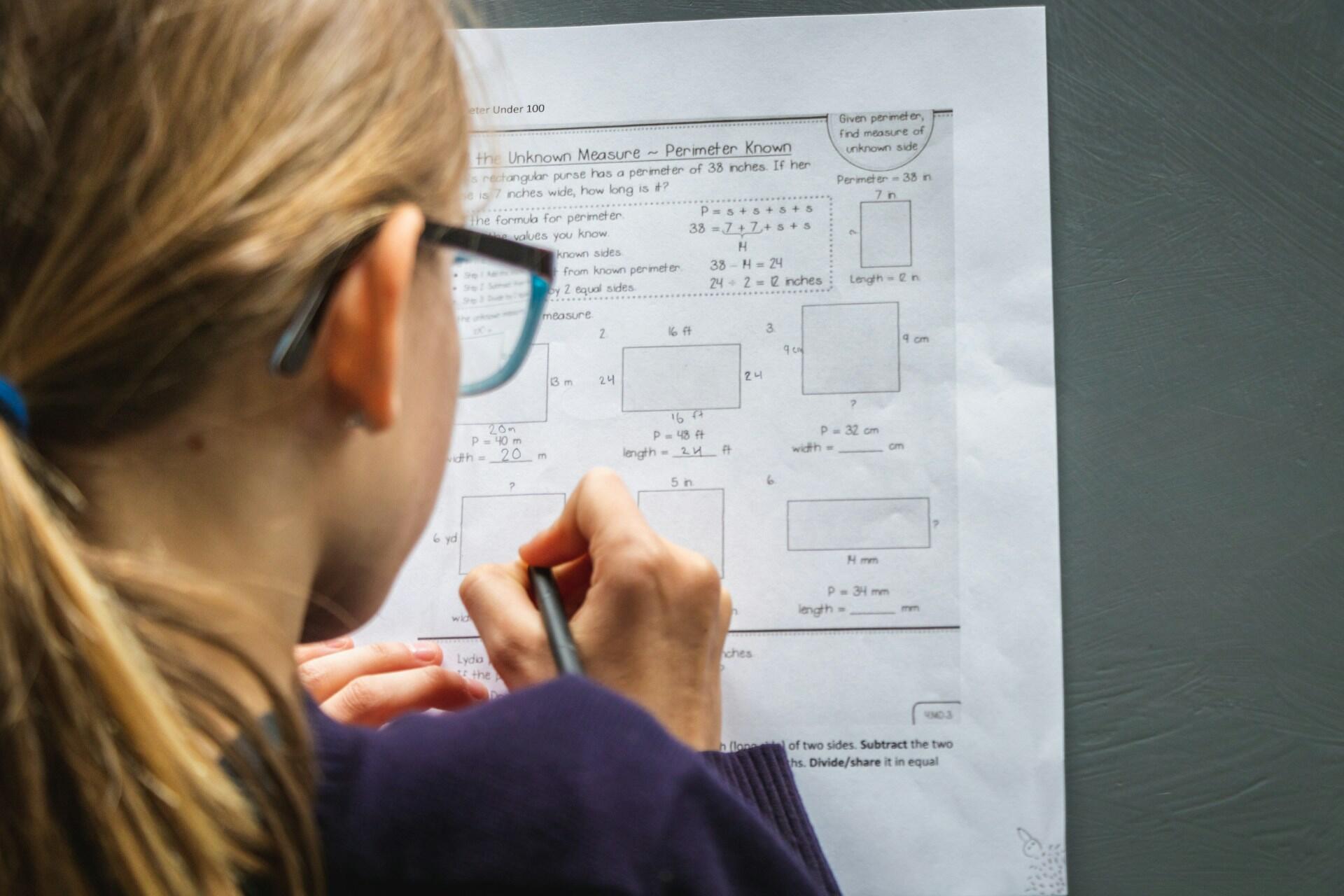The ATAR (Australian Tertiary Admission Rank) is how the Australian education system helps universities decide how students gain entry into university courses after completing their senior school years (Year 12). Whether you're a student, parent, or educator, this guide helps explain how the ATAR system works, including subject selection, scaling, bonus points, and study strategies.

What is the ATAR?
The ATAR is simply a ranking system that compares the academic performance of Year 12 students across Australia. It's reported as a percentile ranking between 0.00 and 99.95, which shows how students' results compare across different exams, schools, and states.
The ATAR mainly determines university admission eligibility. It simplifies tertiary admissions by standardising the results across states and subjects.

As a percentile, an 80.00, for example, would mean that a student performed better than 80% of other students. However, this isn't exactly true since the number is calculated using a theoretical cohort of Year 12 students, including those who don't complete Year 12 or aren't given an ATAR.
The university admissions process is simplified by creating a standardised system for ranking students across Australia. Before its introduction, each state had its own ranking system, making it harder for universities to compare students equally across states.
How Is the ATAR Calculated?
If every student took the same exams across every state in Australia, the ATAR would be fairly simple to calculate. However, with different exams, assessments, and even subject choices, the ATAR is actually more complex than that and the average ATAR isn't even 50!
Here's the ATAR calculation broken down:
Subject Selection and Units
- Students choose a mix of ATAR-approved subjects such as English, Mathematics, and Science.
- Most states require a minimum of 10-12 units (5-6 subjects).
Raw Scores
- Students complete exams and assessments, receiving raw marks for each subject.
Scaling
- Raw marks are adjusted through scaling, ensuring results from different subjects are fairly compared.
- Advanced subjects, like Mathematics Extension or Physics, often receive favourable scaling due to their difficulty.
Aggregate Calculation
- The best-scaled scores from a student's subjects are combined into an aggregate score.
Final Rank Conversion
- The aggregate score is converted into a 0.00 – 99.95 scale rank.
Here's the ATAR explained.
Why Does ATAR Matter for University Admissions?
The ATAR provides a standardised method for tertiary institutions, which means that it plays a critical role in university admissions.
It can determine whether or not a student is eligible for a university course and is used by major admissions centres including UAC (NSW), VTAC (Victoria), and QTAC (Queensland).
Some university courses have minimum ATAR requirements for admission or to be considered.
However, ATAR isn't the only way to gain admission to a university course. With alternative pathways, bonus points, and adjustment factors, a disappointing ATAR isn't always the end of the world.

ATAR tends to matter more for the most competitive courses, such as Medicine, Law, and Engineering. Courses with limited places tend to demand the highest ATAR as part of the minimum course requirements.
The ATAR matters much less for non-competitive Arts, Education, or Business degrees. ATAR requirements are lower in many of these courses, and some universities offer open-entry courses where an ATAR isn't even required.
Types of Subjects and Scaling in ATAR
One key area that plays a crucial role in the ATAR calculation is a student's subject choices. Due to scaling differences, each subject will affect a student's rank.
Remember that English is a compulsory subject in all states. However, the type of English course can vary (e.g., Standard English, English Advanced, English Extension).
Mathematics and science are often highly recommended because of their favourable scaling. They are often a requirement for university courses in the hard sciences.
So, what exactly is scaling?
Scaling adjusts the raw marks from an assessment to account for the fact that not every subject has the same level of difficulty. It considers both the raw results of assessments and the academic strength of the cohort taking the subject.
Typically, subjects where students tend to get lower marks will be scaled up to account for this. Conversely, subjects where most students get very high marks will be scaled down.
However, it also considers students' results in other subjects, as unusually high marks could indicate a strong cohort, not just a relatively easy assessment. The best thing to do is simply use effective study strategies and perform as well as you can.
A student scoring 80% in Mathematics Extension 1 might have their result scaled up to 85%, while 80% in General Mathematics could be scaled down to 75% due to the subject’s lower average performance.

What Are Adjustment Factors and Bonus Points?
Adjustment factors (or bonus points) can increase a student's selection rank based on both academic and non-academic criteria.
Keep in mind that a selection rank is not the ATAR. Instead, it is a modified ATAR once adjustment factors and bonus points are applied.

There are various types of adjustment factors:
- Subject Adjustments: Bonus points for excelling in priority subjects like Mathematics or Science.
- Equity Adjustments: For students from disadvantaged backgrounds or low-SES schools.
- Regional Adjustments: For students from rural or remote areas.
The number of bonus points a student can receive depends on the institution, with some capping the upper limit for bonus points.
A student with an ATAR of 85 applying for Engineering may receive 5 adjustment points for excelling in Physics, raising their selection rank to 90.
ATAR Requirements for Different States
The ATAR exists primarily because different states have education systems and requirements. Though each Australian state calculates the ATAR using a similar structure, there are some key differences.
- NSW (HSC) – Handled by UAC, requiring a mix of English, General Mathematics, and electives.
- Victoria (VCE) – Calculated by VTAC with 4 units of English and other subjects included.
- Queensland (QCE) – Administered through QTAC, requiring 5 general subjects, including English.
If you're wondering why this is the case, it's because education systems in Australia are managed by state governments. The ATAR exists to account for this since, for example, Queensland uses the QCE, while Victoria calculates ATAR through the VCE system.
Always check state-specific requirements when planning your subject selection.
How to Improve Your ATAR: Study Tips and Strategies
Many students fall into the trap of choosing subjects that scale upwards, attempting to game the system by assuming their ATAR results will be boosted by scaling.
However, the real keys to a good ATAR are strategic planning, effective study techniques, and time management.
Here are just some of our favourite strategies for getting a good ATAR:
- Effective Subject Selection: Choose subjects you're passionate about and align with your career goals.
- Time Management: Create a structured study timetable and stick to it.
- Practice Exams: Regularly complete practice papers for Mathematics, English, and Science.
- Active Learning Techniques: Use flashcards, mind maps, and self-quizzing for better retention.

Alternative Pathways to University Without an ATAR
Remember that while the ATAR can dictate whether you're admitted onto your university course of choice, it's not the only way to go to university.
There are several alternative pathways to university:
- Bridging Courses: Short programs to help you meet entry requirements.
- Vocational Education (TAFE): Some diplomas and certificates can lead directly to university courses.
- Mature Age Entry: Universities often accept work experience or professional achievements instead of an ATAR.
- Portfolio-Based Entry: Common for creative fields where work samples replace ATAR scores.
What You Need to Know About the ATAR
The ATAR is a helpful tool for university admissions, but remember that it also has limitations. It plays a crucial role in the most competitive courses, but many other courses have alternative pathways for students who don't achieve their desired rank.
It's a ranking system, not a score, and scaling ensures fairness across different subjects; you can't game the system with subject choices.
Adjustment factors are also intended to increase opportunities for students who may otherwise be disadvantaged when ranked solely on academic factors.
























